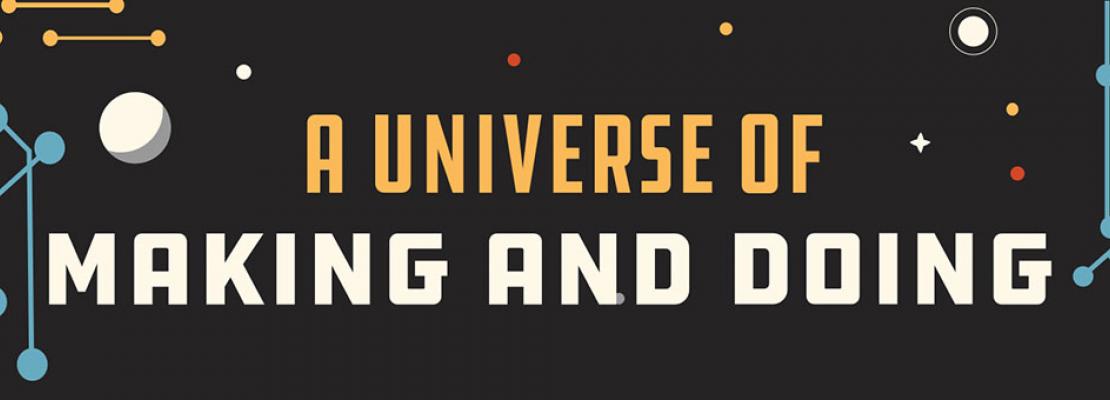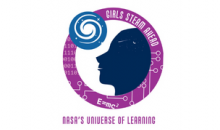Astronomy may often feel like a pretty hands-off science. The science of astronomy, by definition, deals with objects that tend to be millions or even many, many trillions of miles away.
But there are ways to bring the excitement of astronomy and space science down to a more every day, Earth-based level: through making and makerspaces. Luckily, there are ways that anyone can hold or make a (representative) piece of the Universe in their own hands.
A makerspace refers to events or places that people can access and find opportunities to design and create, using hands-on learning projects that get the participants exploring and collaborating by thinking and doing. Often, makerspaces are geared toward – or at least are oriented in some ways – toward students.
Makerspaces often have a unique way of demonstrating how STEM (science, technology, engineering, and math) fields matter in the real world. Makerspaces (and also their various cousins of FabLabs, HackerSpaces, TechShops, etc.) can be independent spaces, or incorporated as special spaces in school, museums, science centers and other arts or informal learning organizations. Public libraries are a particularly great way to grow maker spaces/making because they are often already recognized in the community as a place to learn new things.
Many makerspace activities can be decidedly low-tech, despite connecting to the underpinnings of society’s most sophisticated technological advances. The advantages of incorporating paper-based activities are multi-fold. It can help level the playing field for those who both participate and host these events. Requirements of internet connectivity, hardware, etc. are moot.
We have found that using paper is an excellent way to introduce various topics connected to astrophysics and the exploration of space to children and adults from different backgrounds and interest levels. Here are some of the ways that NASA-related activities have helped bring these space-based ideas into hands right here on the ground.
Paper Circuits: Light Up Exploded Stars
Paper circuits help learners of all ages explore the basics of electricity (energy that results from the existence of charged particles like electrons or protons) and conductivity (the degree to which a material can conduct electricity). Paper circuits function as simple low-voltage electronic circuits (a path through which electrons from a voltage or current source flow) made using paper, LED lights, a type of conductive tape such as copper, as well as a small battery for the power source.
In the “Light Up Exploded Stars” activity, participants can find a neutron star, pulsar, black hole, white dwarf or supernova in the provided NASA images and make it light up with paper circuits through paths of the user’s choosing.
The Science of Flying: Paper Airplanes
While kids might like to make paper airplanes, it’s more than child’s play. There is a lot of science and engineering that goes into making a successful paper airplane. For example, you need to know about what forces act on your airplane. When you push a paper airplane forward (or any airplane for that matter), this is a type of force known as thrust. Meanwhile, air is pushing back on the plane, which is called drag. While a plane is flying, air moving over and under the wings pushing it upward, while the gravity from the Earth pulls it down. All of these forces (thrust, lift, drag and gravity) affect how well a given paper plane's flight will go. Learners can experiment with different aspects of flying a paper airplane, and most importantly, have fun.
Unpack a Star: Simple Origami
Origami is an ancient Japanese style of paper folding. However, it is not only a decorative art form. Origami can provide solutions to problems in modern science and engineering. For example, origami-inspired techniques are used to unfold stents in clogged arteries, release airbags during automobile collisions, and even unfurl the large mirror for the soon-to-be launched James Webb Space Telescope.
In astrophysics, there are instances where the expansion and unpacking of origami helps demonstrate what scientists witness. Take the death of stars. When a star about 10 to 15 times more massive than our Sun runs out of nuclear fuel, it will collapse onto itself and then create a giant explosion. This energetic event, known as a supernova, hurls the outer layers of the star into space, creating an elegant tapestry of energy and stellar debris. In this activity we begin to explore how to use origami to understand the “unpacking” of a massive star using a simple folding activity.
More Paper
There are other fun paper based activities from coding NASA data on paper to creating NASA observatories with paper kits. Furthermore, we are working to expand the popular paper circuits and origami activities and also add a unit on simulating through paper how we work with 3D data sets of objects in the Universe – look for those new modules in the new year. Though some of these paper-based activities included here may have a more prescribed feel to them than is typical of makerspaces, we provide the instructions as a guide for educators and hope that learners of all ages will use them as a launching point to be able to experiment and see where the paper takes them out into the Universe.


